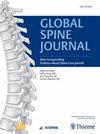如果您可以再次治疗同一个病人,您会做完全相同的脊柱手术吗?多位外科医生对其自身修改情况的调查
IF 2.6
3区 医学
Q2 CLINICAL NEUROLOGY
引用次数: 0
摘要
研究设计基于病例的调查。研究目的:本研究旨在调查一组外科医生从他们自己的翻修手术中学到了什么,以及他们今天会采取什么不同的做法。方法:查询 ASD 手术患者的多中心数据库,以确定在 2009 年至 2019 年期间由同一外科医生实施过至少 2 次手术的患者。为每个病例创建了一个临床小故事,包括人口统计学、事件时间表、X光片/测量、患者报告的结果、并发症以及首次手术和翻修手术中使用的手术策略。然后要求手术外科医生填写一份由五个问题组成的调查表,旨在确定有助于手术决策和计划的因素。与非翻修组相比,翻修组患者的随访情况相似(P = 0.73),需要进行翻修手术的最常见并发症是近端连接失败(42%)和假关节(28%)。据外科医生报告,52.3%的病例不会改变手术策略。翻修的主要原因是硬件/器械问题(24.4%)。学习要点包括与杆相关的选择(23.3%)、水平选择(19.8%)、PJF预防策略(15.1%)和矢状对齐目标(11.6%)。结论外科医生在近一半的病例中看到了通过改变原始手术中的某些因素来改善结果的机会。虽然从外科医生的角度来看,40%的失败病例仍无法解释原因,但本研究强调了在成人脊柱畸形手术中采用改变的能力,并阐明了某些手术决定背后的原因。本文章由计算机程序翻译,如有差异,请以英文原文为准。
What if You Could Treat the Same Patient Again, Would You do the Exact Same Spine Surgery? A Multi-Surgeon Survey of Their Own Revisions
Study DesignCase-based survey.ObjectivesThis study aims to investigate what a group of surgeons learned from their own revisions, and what they would do differently today.MethodsA multi-center database of ASD surgical patients was queried to identify those with at least 2 surgical procedures performed by the same surgeon between 2009 and 2019. A clinical vignette was created for each case including demographics, a timeline of events, radiographs/measurements, patient-reported outcomes, complications, and surgical strategies used for the index and revision surgeries. The operative surgeon was then asked to fill out a five-question survey aimed at determining factors that contribute to operative decision-making and planning.Results86 patients were operated on by 6 participating surgeons for both index and revision ASD surgery. The revised patients had similar follow-up compared to the non-revised group ( P = 0.73), with the most common complications indicating a need for revision surgery being proximal junctional failure (42%) and pseudoarthrosis (28%). Surgeons reported that they would not change their surgical strategy in 52.3% of the cases. The leading cause for revision was hardware/instrumentation issues (24.4%). Learning points included rod-related choice (23.3%), level selection (19.8), PJF prophylactic strategy (15.1%), and sagittal alignment objective (11.6%).ConclusionsSurgeons saw opportunity in nearly half of the cases to improve outcomes by changing something in the original surgery. While 40% of the failures remained unexplained from the surgeons’ perspective, this study highlights the capacity for adopting changes in adult spinal deformity surgery and illuminates the reasoning behind certain surgical decisions.
求助全文
通过发布文献求助,成功后即可免费获取论文全文。
去求助
来源期刊

Global Spine Journal
Medicine-Surgery
CiteScore
6.20
自引率
8.30%
发文量
278
审稿时长
8 weeks
期刊介绍:
Global Spine Journal (GSJ) is the official scientific publication of AOSpine. A peer-reviewed, open access journal, devoted to the study and treatment of spinal disorders, including diagnosis, operative and non-operative treatment options, surgical techniques, and emerging research and clinical developments.GSJ is indexed in PubMedCentral, SCOPUS, and Emerging Sources Citation Index (ESCI).
 求助内容:
求助内容: 应助结果提醒方式:
应助结果提醒方式:


